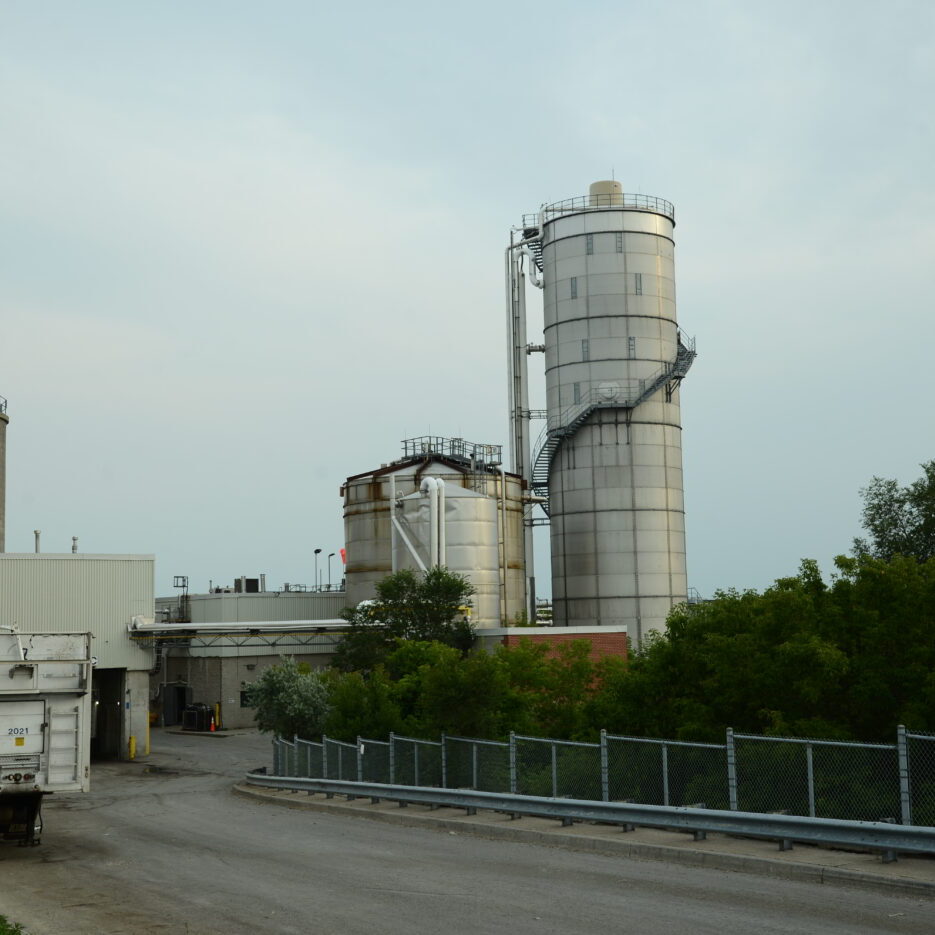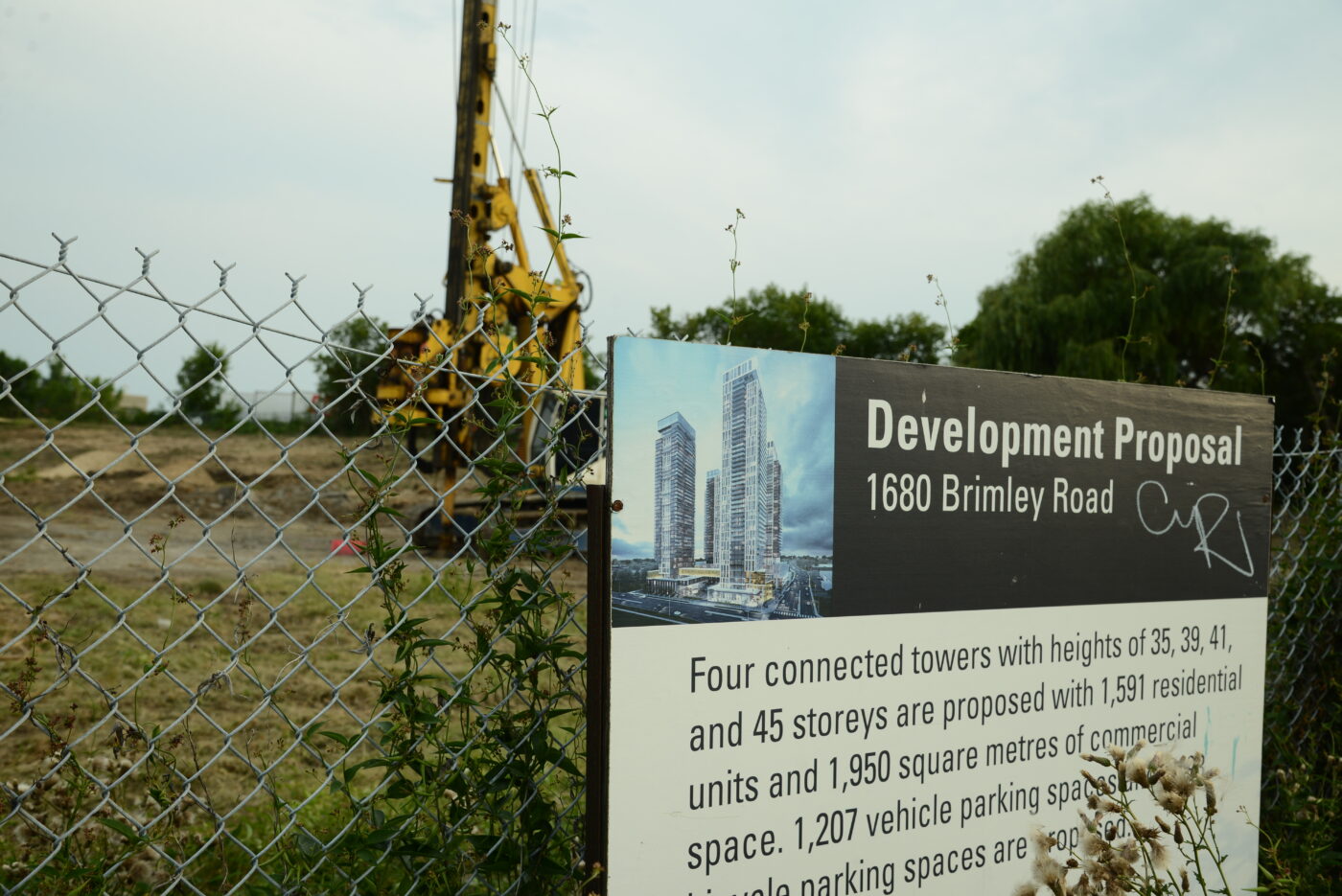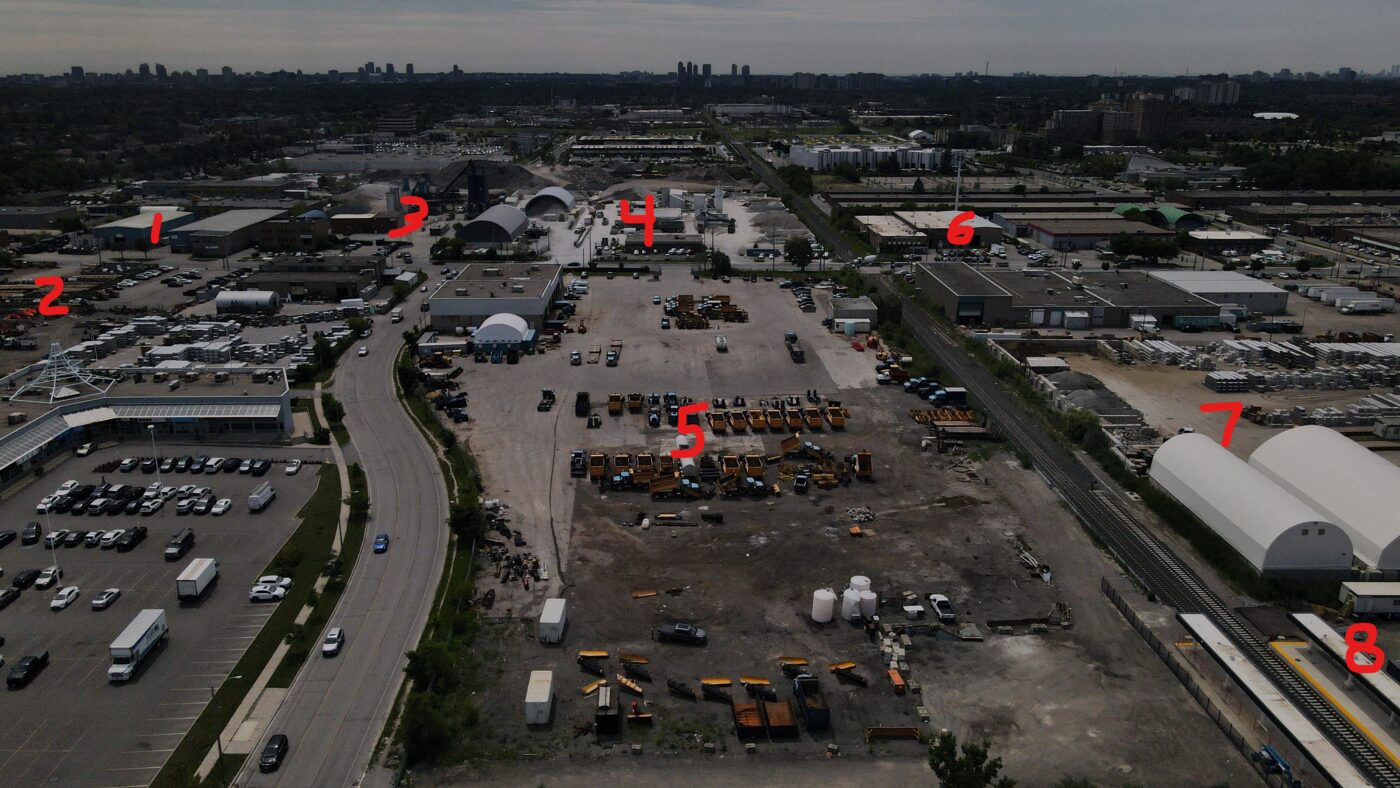Rock and hard place: In Scarborough’s industrial lands, locals must choose between housing and jobs
THE GREEN LINE
ORIGINAL STORY
Rock and hard place: In Scarborough’s industrial lands, locals must choose between housing and jobs
New residential buildings tower over industrial zones in Scarborough and across Toronto, bringing in much-needed housing, but putting heavy industry jobs at risk.

New Forest Paper Mill as seen from the outside.


ANTHONY MILTON
Born and raised in Toronto, now based at College Street and Dovercourt Road. Master of Journalism grad from TMU. Writes about politics and culture in the city.
July 14, 2023
With six enormous concrete tanks jutting up from scraggly bushes, and a tall plume of steam rising overhead, New Forest Paper Mill near Brimley Road and Progress Avenue isn’t exactly a pretty sight.
It doesn’t sound great, either: Day and night, semi-trailers beep out warnings as they reverse in and out of the factory.
For decades, the mill — a provider of stable, unionized jobs — has been neatly cordoned off in an industrial zone just west of Scarborough Town Centre. But times are changing. In May, the City of Toronto gave the green light for two large condo towers to go up next door, which is causing concern for the owners. If new residents complain about the noise and truck traffic, the Ontario government could shut down New Forest, trading well-paying jobs for housing in a neighbourhood that's in urgent need of both.
New Forest is just one example of a dilemma affecting industrial lands across Toronto. With housing desperately needed — and development incredibly profitable — landowners are increasingly lobbying the City to let them build residential units on or near industrial sites. At a July 5 meeting of the City’s Planning and Housing Committee, chief planner Gregg Lintern said that since 2020, the City had reviewed over 150 requests to change industrial lands into residential mixed-use areas, an effort that required millions of dollars in labour and consulting expenses.
Paul Doyle, CFO of Atlantic Packaging Products Ltd., which is one of the owners of New Forest, says he sees trouble on the horizon. His mill operates under rules called “environmental compliance approvals” set by Ontario’s Ministry of Environment, which govern the environmental impact that heavy industry plants can have on their surroundings. Doyle fears these permissions could be put in jeopardy if new residents take offence to his mill’s sites and sounds.
“Residents can complain to the Ministry of Environment about anything and everything, and the ministry is required to follow through,” Doyle explains. “If you have 1,000 new neighbours and they’re complaining about noise — about a 24-hour operation right beside them — it doesn’t matter if we were there first.” The ministry did not respond to a request for comment.
A common response by the ministry is to impose limits on industry’s operating hours, but Doyle says the mill can only remain viable by working around the clock.
Heavy industry and residential lands simply aren’t compatible, according to Doyle. “There’s always a conflict,” he adds. “At some point, industry just won’t survive.”

A development for four connected towers are proposed at this empty site at 1680 Brimley Rd., a short walk from the New Forest Paper Mill.

Industrial activity,
residential complaints
These industrial lands, called “employment areas” by city planners, represent 13 per cent of the City’s land, but provide roughly 27 per cent of its jobs, according to a staff report published on June 13. City staff recommended retaining 80 per cent of this land, while opening up the rest to conversion. Despite Doyle’s warning, at the July 5 committee meeting, councillors recommended a raft of motions to convert 33 more industrial sites to housing — against the recommendations of City staff.
One such approval was for 1774 Ellesmere Rd., a property 1.5 km east of the New Forest Paper Mill. Currently the site of Sheridan Nurseries, a garden store, it’s owned by the family of Mark Cullen. Like many other landowners, Cullen wants to see the land converted to residential mixed-use.
“There’s a housing crisis in Toronto,” Cullen says. “When you add it up, it just makes sense that that property would better serve the people of Toronto if it provided high-density residential use.”
He adds that he grew up near the mill, and doesn’t think it would pose a problem. “I was about as far away from that plant as our store on Ellesmere is now,” he says. “People want to live near where they work.”
But some industrial sites are already dealing with residents’ complaints, and fear things could get much worse. Dominic Crupi is the vice-president of D. Crupi & Sons Ltd., a road construction services company that operates an asphalt plant near Kennedy Road and Steeles Avenue East. Like New Forest, his plant is ugly, produces a cacophony of truck beeps and also lets off the acrid smell of hot asphalt. He says that during the hot summer months, when people sleep with the windows open, they regularly receive complaints about truck sounds from the surrounding low-rise residential areas.
Plants like this have caused conflicts before. The Ingram Asphalt plant operates on the other side of the city, near Caledonia Road and Eglinton Avenue West, on land owned by another member of the Crupi family, Mike Crupi. It lies just 400 metres from a seven-storey long-term care facility, and 500 metres from a low-rise residential neighbourhood. Local resident Linda Hong had been filing complaints about the facility’s appearance, dust and smell since 2016, under the Twitter handle @UnluckyResident.
Nov 26, 2022, #Toronto, #Canada, our area site view, such view has been here 23 years already, still continues, since @cityoftoronto @ONenvironment want this asphalt plant on this site, even our air is dirty, and environment is unhealthy, they have no concern about us. @UNEP @WHO pic.twitter.com/btcc7ZpZTG
— unlucky resident (@UnluckyResident) November 26, 2022
“Our area of influence according to the Ministry [of Environment] is a kilometre,” says Dominic Crupi about his asphalt plant at Kennedy Road and Steeles Avenue East, which means his company has to manage sound, odour and dust in that radius. “It becomes more difficult to meet those requirements when you’re dealing with a high-rise since there’s nothing to buffer for sound.”
Just 400 metres away, on the current site of the Splendid China Mall, a development application is in the works that would see three large condominium towers built well within Crupi's plant’s area of influence.
Many of these industrial businesses provide crucial City services, which could be lost or made more expensive if displaced. Crupi says his company has a $49 million contract for road work across Toronto. “We saved the City almost $9 million to the second bidder. If we did not have this location, we would not be able to bid on that job,” he explains.

An photo of the industrial site near Kennedy Road and Steeles Avenue East, annotated by Dominic Crupi of D. Crupi and Sons Ltd. Residential developments have been proposed nearby, even as many of the plants operate 24/7 and generate noise that can disrupt locals.
- AGF Reinforcing steel, a company that supplies reinforcing steel to many construction industries across Ontario including highrise developments.
- Marshaling yard for AGF and a contractor yard for TriSan Construction.
- D. Crupi & Sons Office and asphalt plants as well as an aggregate recycling facility.
- Metrocon Concrete plant and aggregate recycling facility.
- D. Crupi & Sons shop and equipment yard.
- All-Weld fabrication.
- One of the proposed residential development sites.
- Milliken GO Station platform.

The pressure on industry has led some to wonder why housing can’t be built elsewhere. At the July 5 Planning and Housing Committee meeting, Ward 23 Scarborough North Councillor Jamaal Myers observed, “In every map we looked at, there were single family homes just sitting there, just waiting to be gently densified. Perhaps we should go after those areas instead of areas of employment.”
Council will consider the committee’s recommendations in its July 19 to 20 meeting.
Fact-Check Yourself
Sources and
further reading
Don't take our word for it!
Check our sources yourself.
